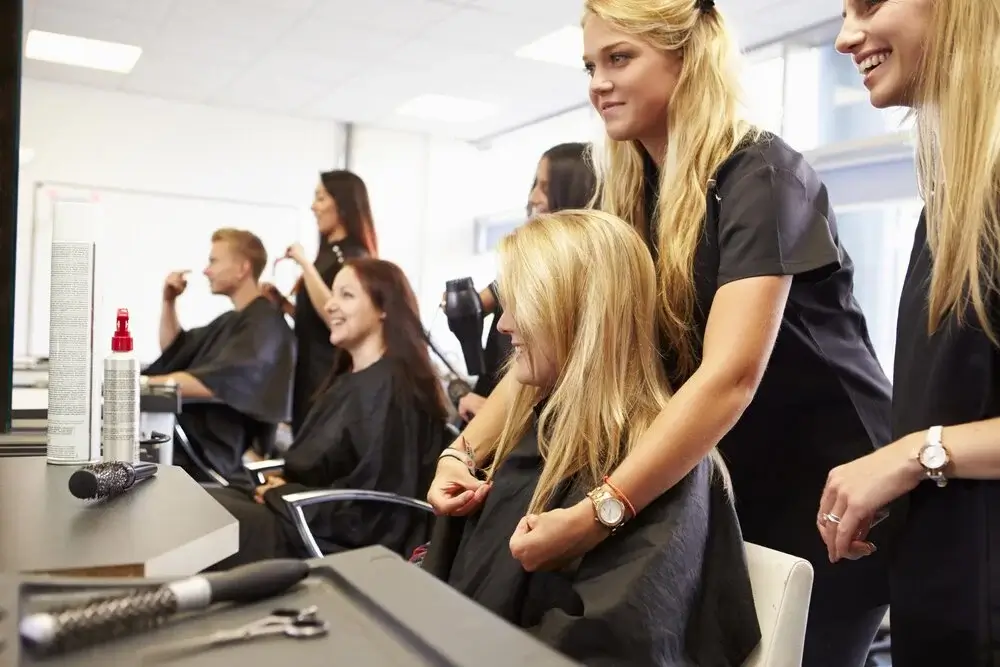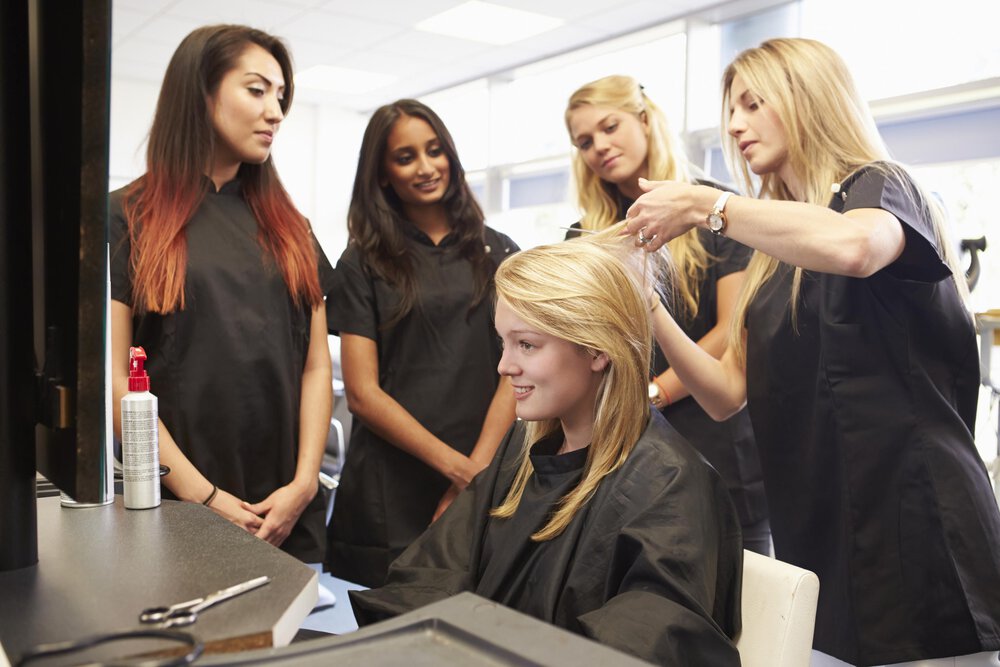How to get a hairdressing apprenticeship
A hairdressing apprenticeship is an excellent first step in pursuing a hair and beauty career. But how do you get onto one?
We spoke to Rachel Simpson, a work-based assessor at Bradford College about how to get a hairdressing apprenticeship and the benefits of completing one of these courses.
How to get a hairdressing apprenticeship
If you’re interested in becoming a hairdresser, how do you go about it? We asked Rachel about apprenticeships and other options.
Direct Line for Business: So what is a hairdressing apprenticeship, how do you get one and what qualifications do you need?
Rachel Simpson (RS): An apprenticeship is a work-based learning course where you can typically expect to attend college one day a week. For the remaining weekdays, you’ll be working for a relevant employer and earning a wage. Apprentices can expect to be treated like any other employee and are legally entitled an employment contract, a minimum wage and statutory sick pay.
Most of our hairdressing apprentices are 16-year-old school leavers but there’s no age limit for applicants. We require a minimum Maths and English qualification, but if students haven’t gained the accepted GCSE grades, they can study for Functional Skills qualifications as part of their college tuition.
Our students must work for at least 30 hours a week, and we’ll support them to find and apply for suitable jobs if they need it. These will be apprentice roles, and they can expect to be recruited via a proper job interview. Matching prospective students with hairdressing salons is a straightforward process as we have strong links with local businesses. We also often receive enquiries from salons that are looking to recruit apprentice hairdressers.
Direct Line for Business: How long does a hairdressing apprenticeship take?
RS: This will depend on the qualification. At Bradford College, we run Level 2 and Level 3 NVQ Diplomas in hairdressing, and offer the same courses in barbering. Each of our course levels can be completed in 18 to 24 months and they are roll-on/roll-off courses. This means they can be started at any time of year.
Nationally, there are other apprenticeship courses in hairdressing, run by different awarding bodies. The course materials might vary but they’ll still be recognised as the same qualification(s).
Why study a hairdressing apprenticeship?
We wanted to know a little more about the advantages of an apprenticeship when compared with other routes into the industry, so we asked Rachel for her views.
Direct Line for Business: Why might you recommend a hairdressing apprenticeship instead of full-time study?
RS: In my opinion, a hairdressing apprenticeship is the best way to learn as it’s a hands-on approach. Most students will pick up skills more quickly than if they were studying hairdressing full-time in a classroom environment. It’s also means going into a real workplace so they’ll also pick up other skills and insights that they might miss out on in the classroom. These could include things like customer service and how businesses are run and managed.
My role involves visiting students at work in addition to those who are training at college. In my experience, I’ve seen that the hairdressing apprentices will generally be more competent sooner, particularly on some of the harder techniques.

Direct Line for Business: If working in a salon is the end goal, why can’t someone just apply directly to a salon as a trainee?
RS: A hairdressing apprenticeship is a recognised qualification. That in itself is likely to give you more opportunities than if you'd spent the same amount of time working full-time in a salon, for example, if you decide to become a freelance hairdresser, or set up your own beauty business.
Every hairdresser and beauty industry professional will have to do some form of continuous professional development through their career. This will be easier if you’ve been studying and doing assessments right from the start.
Hair and beauty is a trend-led industry, where products, techniques and styles change all the time. It can be very glamorous, but being a hairdresser is also hard work! The hard work does pay off though, and it’s a brilliant industry to be in.
Like many colleges, we have strong links with a leading hair brand that is committed to supporting our apprenticeship courses, so our students have the opportunity to learn from their experts. Salons will often receive and provide in-house training opportunities too, but in a full-time role you aren’t guaranteed as many enrichment opportunities.
We’re passionate about enrichment and arrange visits from hair and beauty influencers. We also take students to hairdressing industry events and encourage our students to enter competitions like Worldskills and Wella Exposure. I’ll also arrange for my Level 3 students to get a chance to do style models at The Great Yorkshire Show.
What happens once I finish?
The end of an apprenticeship could be the start of a fantastic career. So what does life after the course look like?
Direct Line for Business: How did your own career progress after you’d qualified as a hairdresser?
RS: When I did my Level 2 hairdressing apprenticeship course, I’d built my own client base by the time I’d qualified, so I went straight into a salon.
I stayed as a salon-based hairdresser for some time before I did my Level 3 hairdressing apprenticeship. Ultimately it was the desire to work in education that lead me to do it.
A hairdressing apprenticeship allows you to progress to a number of different beauty industry careers and the skills you learn will mean that you’ve always got something to fall back on.

Direct Line for Business: So what happens after an apprenticeship in most cases?
RS: More often than not, hairdressing apprentices will have the opportunity to stay on after they qualify. Even if they don’t, or if they want to go somewhere else, they’ll be in a great position to secure a different role.
It’s always great when our former hairdressing apprentices crop up in the industry press or mainstream media. A few of our former students have done really well in competitions and have quickly progressed to some really exciting things, including styling hair for OK! magazine.
Direct Line for Business: Why do you think salons take on apprentices?
RS: Apprenticeships are very much a partnership between the college, salons and students.
Hairdressing salons can greatly benefit from apprentices, as they'll often help keep the salon running smoothly in addition to providing all the hair dressing services and vital business support.
Salons also get the chance to train someone in their own way and can end up with a great stylist that their clients like.
Want to know more about what life as a hairdresser is like? Check out our interview with professional hairdresser Carly Musleh to find out.
And to find out more about the career options available to you in the hair and beauty industry, head over to our interactive tool to style your own pathway to success.

